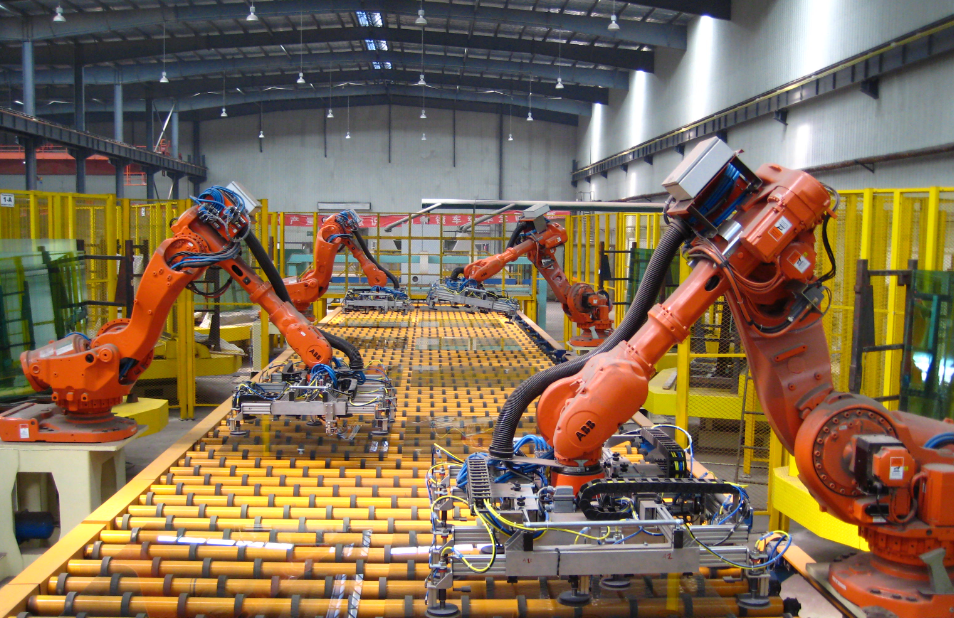New York – From 2017 to 2020, the employment rate for artificial intelligence (AI) increased all over the world, with Brazil experiencing the greatest shift in the hiring index, with around 3.5 times more AI-related professions, whereas India exhibited around 3 times more AI-related professions in 2020 than in 2017. Owing to the volume of data available and the accessible processing power, AI approaches are being used more and more in the financial industry in fields including asset management, algorithmic trading, credit underwriting, and blockchain-based finance. Big data is used by machine learning (ML) models to automatically learn from experience and data in order to increase predictability and performance without the need for human programming. For instance, by obtaining over USD 1 billion in overall capital, SambaNova Systems was the most well-funded artificial intelligence (AI) chip start-up firm in the world as of August 2021.
Kenneth Research published a report titled “Global Robotics Process Automation (RPA) Market” which is studied for the forecast period, i.e., 2022 – 2031. The market search report also provides a detailed analysis of the top competitors operating in the market, as well as industry characteristics such as growth drivers, restraining factors, current trends, and market growth prospects during the forecast period.
Increasing workplace efficiency is one of the key focus areas of business organizations nowadays. With the adoption of artificial intelligence (AI) and cloud-based solutions, businesses are enhancing work efficiency and productivity, as well as lowering their overhead costs. For instance, the U.S. Army has granted around USD 9 million to 11 small enterprises to create artificial intelligence and machine learning technologies that will improve Army decision-making, enable autonomous operations and speed up and expand the scope of military action. Whereas the number of AI companies in the United States was more than 2025 in 2018.
On the other hand, the use of AI in finance is anticipated to help financial organizations gain a competitive advantage by increasing their efficiency through cost reduction and productivity enhancement, as well as by raising the caliber of the services and goods they provide to customers. The competitive advantages can then benefit financial consumers by delivering higher-quality and more individualized products. Owing to such factors, the global robotics process automation (RPA) market, which garnered around USD 1.6 billion in 2021, is further predicted to grow with a CAGR of ~27% over the forecast period. Furthermore, the requirement for smart software to conduct high-volume, repetitive operations that traditionally take humans a long time to complete and are tiresome to perform is another factor boosting the market growth. For instance, AMP ROBOTICS, an American robotic company, installed 25 robots across the U.S. and raised USD 55 million in 2021.
The global robotics process automation (RPA) market is segmented on the basis of region into North America, Europe, Asia Pacific, Latin America, and the Middle East & Africa region. Owing to the presence of major innovators and forerunners in the adoption of robotics in the area, North America is anticipated to hold the highest share of the market. RPA adoption by SMEs has also increased as a result of more awareness about how to improve the various organizational tasks, which is also anticipated to drive the growth of the market in the region. In one of the surveys conducted in the United States in the year 2018, the organizations of the 1,100 US managers surveyed were already exploring AI, whereas, 63% of the businesses polled were using machine learning in their operations. In addition to that, hospitals in the US such as, Massachusetts General and Brigham and Women’s Hospitals have been using ML algorithms and outlier detection mechanisms to recognize and avoid medication-related errors and risks. Moreover, out of the data of 373,992 patients who were seen in the outpatient clinics of these hospitals, 10,668 probable errors and adverse medication occurrences were recorded with the help of the patient safety platform, MedAware. Further, an analysis of 300 warnings generated by MedAware on a random basis revealed that 68.2 percent of the warnings would not have been flagged by an existing decision support system, while 92 percent of the warnings were accurate based on the data available, and that 79.7 percent of the warnings were clinically valid.
On the other hand, the market in the Asia Pacific region is anticipated to grow at the highest CAGR over the forecast period. The development can be ascribed to rising RPA usage across numerous industries including manufacturing, IT & telecom, healthcare, retail, and others. Additionally, the region serves as a hub for the manufacturing and IT sectors, and both of these sectors require automation services to boost productivity and lower mistake rates. In a poll on the usage of AI technology in enterprises throughout the Asia Pacific region done in 2020, 60 % of participants stated that IT managers in their respective companies employed AI technology most actively in 2019. Comparatively, 10% of the respondents in the Asia Pacific area to the same poll claimed that their companies were using AI technology for compliance and legal reasons. Also, in the IT management sector, 70% of the organizations utilized AI technology in the year 2022, which was a rise of 10% from 2019, i.e., 60%. On the other hand, in the customer service sector, 73% of the businesses used AI technology which was 61% in 2019.
The study further incorporates Y-O-Y Growth, demand & supply and forecasts future opportunities in North America(U.S., Canada), Europe(U.K., Germany, France, Italy, Spain, Hungary, Belgium, Netherlands & Luxembourg, NORDIC[Finland, Sweden, Norway, Denmark], Poland, Turkey, Russia, Rest of Europe), Latin America(Brazil, Mexico, Argentina, Rest of Latin America), Asia-Pacific(China, India, Japan, South Korea, Indonesia, Singapore, Malaysia, Australia, New Zealand, Rest of Asia Pacific ), Middle East and Africa(Israel, GCC[Saudi Arabia, UAE, Bahrain, Kuwait, Qatar, Oman], North Africa, South Africa, Rest of the Middle East and Africa.)
The global robotics process automation (RPA) market is segmented by deployment mode into on-premises and cloud. Owing to the fast-rising popularity of cloud-based RPA on the back of its capacity to offer more scalability, security, simplicity of access, and management while giving a superior experience to the users, the cloud segment is anticipated to hold the greatest share of the market throughout the forecast period. For instance, Blue Prism, a world leader in intelligent automation for enterprises, had users in more than 170 countries and in more than 2,000 companies, which includes Fortune 500 and public sector organizations, who are generating value with new working methods, unlocking efficiencies, and reinvesting millions of hours of work into their businesses.
The global robotics process automation (RPA) market is segmented by industry into BFSI, healthcare, IT & telecom, manufacturing, retail, hospitality, and others. Out of these segments, the IT & telecom segment is anticipated to garner the highest market share by the end of 2031. One of the major factors anticipated to drive the growth of the segment is the growing use of AI by IT & telecom companies to support customer care operations as it enhances the customer experience and promotes cost-effectiveness. Cybersecurity and customer service are the 2 most regarded applications of AI, with 51 percent and 47 percent of respondents from the IT and telecom sectors, respectively. On the other hand, the manufacturing segment is projected to grow with a significant CAGR during the forecast period. in the manufacturing sector, around 60 percent of respondents believe that quality control is expected to be the most significant application of AI. Whereas, 45 percent of respondents prefer inventory management to be expected as the most significant application. Additionally, 93 percent of manufacturing businesses believed that AI is expected to be a key tool to stimulate growth and innovation in the industry.
The global robotics process automation (RPA) market is also segmented on the basis of operation, and by application.
Global Robotics Process Automation (RPA) Market, Segmentation by Operation:
- Rule-Based
- Knowledge Based
Global Robotics Process Automation (RPA) Market, Segmentation by Application:
- Customer Support
- Administration & Reporting
- Data Migration & Capture Extraction
- Analysis
- Others
Source: Kenneth Research




